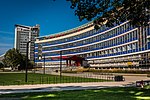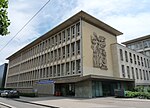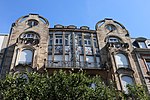EM Strasbourg Business School
EM Strasbourg Business School is a French business school created in 1919 in Strasbourg, Alsace. Since 2000 it is one of the elite grandes écoles in France, ranking in the top 17 business schools in the nation. It is the only French Business School to operate under the umbrella of a traditional University: the University of Strasbourg. This model, inspired by US and other international references, enables the school to benefit from the multidisciplinary academic research conducted at the University of Strasbourg, a strong support from the public sector and solid partnerships with the private sector. The school is the only one in France to be ranked in the Shanghai academic ranking of world Universities through its affiliation with the University of Strasbourg. Students can focus their studies in banking and finance, entrepreneurship and management, finance, accounting and auditing, supply chain management, management of information systems, and marketing and sales. The school maintains a large undergraduate and graduate exchange program with nearly 200 partner institutions located in 55 countries all over the world, such as Trinity College, Dublin, Indian Institute of Management Bangalore, and HEC Montréal.
Excerpt from the Wikipedia article EM Strasbourg Business School (License: CC BY-SA 3.0, Authors).EM Strasbourg Business School
Rue de la Somme, Strasbourg Quartier des XV
Geographical coordinates (GPS) Address Nearby Places Show on map
Geographical coordinates (GPS)
| Latitude | Longitude |
|---|---|
| N 48.583333333333 ° | E 7.7733333333333 ° |
Address
Pôle Européen de Gestion et d'Economie
Rue de la Somme
67091 Strasbourg, Quartier des XV
Grand Est, France
Open on Google Maps











